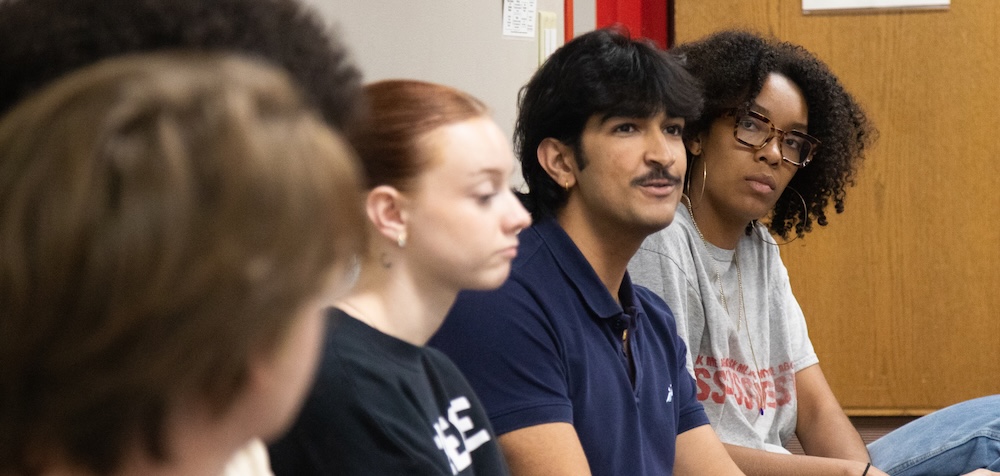
While many students may be thinking about scary thrills during Halloween week, students in our new postproduction class have been thinking about and creating those experiences all semester. Communication Arts instructor Craig Erpelding created the new capstone course to help students explore a variety of postproduction workflows as they re-edit a found footage horror film.
There are many tropes within the thriller genre, which create expectations among film-watchers. By understanding these tropes, students are finding different creative solutions to meet audience expectations, improve the film, and produce a more satisfying viewing experience.
“Most of the time, people think editors are just people who click the buttons and get footage on the timeline,” Erpelding said. “There are actually a lot of creative problem-solving solutions, like moving scenes around or removing scenes that interrupt the pacing or flow, that can build anticipation and ultimately make a film work.”
The first portion of the course has students clearly identifying the film’s message and theme, determining who the main character is and what their story arc needs to be, and mapping out the scenes that need to be moved, cut, or recreated. Students can then create new assets for their project by filming a new scene or creatively using AI to piece things together. After they have a cut of the film locked, students will spend the rest of the semester working on sound design and color correction to strengthen the anticipation and scares they built throughout the story.
“We have to understand the motivation in the story, and that goes all the way through the entire post-production process,” Erpelding said. “We’re not color correcting just to make the film look good; we’re doing it to set the tone and mood of the scene. We do the same thing with sound design.”
By focusing on the narrative motivation throughout the editorial process, students are learning to stay consistent with the film’s themes and tones they established at the beginning of the semester.
“With a course that’s focused on postproduction, the fun part is taking a work in progress and figuring out how to make it better all the way through final delivery,” Erpelding added. “As an educator, I’m always excited to think about what sort of classes do I wish I could have taken, and I believe this is that class.”
Erpelding hopes to offer this course every fall and incorporate different genres of film footage into future sessions. This ongoing opportunity for students to expand their craft and accomplish an ambitious project will give them the hands-on postproduction experience they need to launch their careers. For now, this semester’s students will enjoy the extra thrills of Halloween week and get inspired as they prepare to lock the cuts of their projects.